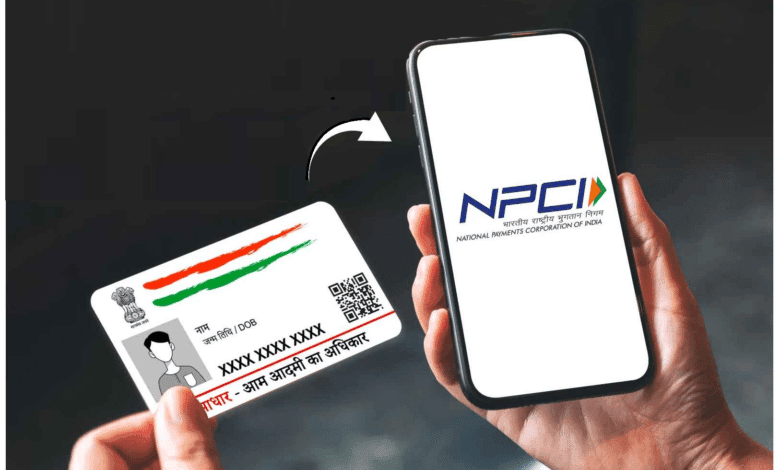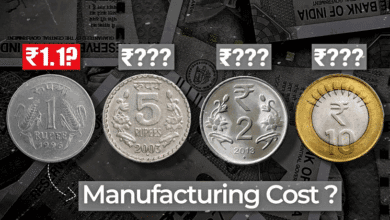NPCI.org.in Com: Understanding the National Payments Corporation of India and Its Role in India’s Digital Payment Ecosystem

The npci.org.in com is a key institution that has played a significant role in shaping the digital payment landscape in India. As India moves towards a cashless economy, the role of NPCI has grown increasingly important. Established to create a robust payment infrastructure and provide a safe, secure, and accessible payments platform to all Indians, National Payments Corporation of India (NPCI) has revolutionized the way financial transactions are conducted in the country.
In this article, we will dive deep into npci.org.in com, its role, services, major payment systems, and its contribution to India’s digital payment revolution. Whether you’re an entrepreneur, financial professional, or just someone interested in India’s digital payment ecosystem, this guide will give you a detailed understanding of NPCI.org.in.
Introduction: What is NPCI?
The National Payments Corporation of India (NPCI) is an umbrella organization that manages and operates the country’s major retail payment and settlement systems. It was founded in 2008 under the guidance of the Reserve Bank of India (RBI) and Indian Bank’s Association (IBA), with the aim of making digital payments more efficient, affordable, and secure for the masses.
NPCI’s core mission is to enable digital payments across India, particularly in the underbanked and rural areas, thereby promoting financial inclusion. With an emphasis on interoperability, scalability, and security, NPCI aims to build a state-of-the-art payment infrastructure that can handle millions of transactions every day.
Key Objectives of NPCI:
- To provide a robust and secure payment system for all stakeholders.
- To facilitate financial inclusion by creating easy-to-use payment systems.
- To ensure real-time settlement of transactions across multiple platforms.
- To reduce the dependency on cash and enhance digital payment adoption across India.
Npci.org.in com is the backbone of several important payment systems in India and is responsible for creating a safe and accessible payment ecosystem.
History and Evolution of NPCI
The history of NPCI is closely linked to the growth of digital banking and payments in India. Before its formation, India’s digital payments infrastructure was fragmented, and there was a lack of a unified payment system. Here’s a timeline of NPCI’s evolution:
2008: Formation of NPCI
NPCI was established as an initiative to handle all retail payments and settlement systems in India. The idea was to integrate various payment systems under a single umbrella, creating a seamless experience for users across banks and financial institutions.
2010: Launch of National Financial Switch (NFS)
NPCI launched the National Financial Switch (NFS) to connect multiple ATMs across India. This allowed ATM users to withdraw cash from any bank’s ATM, creating a network of over 100,000 ATMs.
2011: Launch of RuPay Card
One of npci.org.in com biggest milestones was the launch of the RuPay card, India’s domestic card network. This was a significant step toward reducing the country’s dependency on foreign card networks like Visa and MasterCard. RuPay became the primary card used for ATM withdrawals and point-of-sale (POS) payments.
2013: Introduction of IMPS (Immediate Payment Service)
NPCI introduced the Immediate Payment Service (IMPS), which enabled real-time interbank transfers. IMPS became a game-changer, providing a faster and more reliable way of transferring money between banks, especially for instant remittances.
2014: Launch of UPI (Unified Payments Interface)
The Unified Payments Interface (UPI) was a landmark development in India’s digital payment ecosystem. UPI allowed users to link multiple bank accounts to a single mobile app and made it easier to send and receive money instantly. UPI has since become the foundation for various mobile wallet applications and digital payment solutions.
2016: Introduction of Bharat Bill Payment System (BBPS)
NPCI launched BBPS, a platform for bill payments, which simplified the process for users to pay utility bills, taxes, and other recurring payments. This helped drive digital financial inclusion by enabling users in remote areas to pay bills easily.
2017 and Beyond: Expansion and Integration
NPCI has continued to expand its reach by introducing services like AEPS (Aadhaar Enabled Payment System), Bharat QR, and National Payments Gateway. These innovations have made digital payments more accessible to a broader population, including those without internet access.
Key Payment Systems Powered by NPCI
NPCI operates several key payment systems, each serving different functions in India’s financial ecosystem. Below are the primary systems powered by NPCI.
1. RuPay Card Network
The RuPay card is India’s first domestically developed debit and credit card payment network. It was designed to compete with international card networks like Visa and MasterCard. The card offers benefits such as:
- Lower transaction costs for merchants.
- Wide acceptance across ATMs, POS terminals, and e-commerce websites.
- Integration with the Aadhaar system for identification.
2. UPI (Unified Payments Interface)
UPI is a real-time payment system that facilitates instant bank-to-bank transactions via smartphones. It allows users to send or receive money using a unique Virtual Payment Address (VPA), making it easier than ever to conduct digital transactions. UPI supports both P2P (person-to-person) and P2M (person-to-merchant) payments, with features like:
- Bill payments.
- Mobile recharges.
- Peer-to-peer transfers.
The introduction of UPI has been a major milestone in India’s drive toward a cashless economy, and it has seen a tremendous surge in transaction volumes.
3. IMPS (Immediate Payment Service)
IMPS allows for instant interbank money transfers between banks using mobile numbers, email addresses, or account numbers. npci.org.in com Unlike traditional bank transfers, which can take hours to process, IMPS operates 24/7 and facilitates real-time money movement. Its advantages include:
- Instantaneous payments.
- Availability of multiple access channels (mobile, ATM, and internet banking).
- Low-cost transfer services for customers.
4. AEPS (Aadhaar Enabled Payment System)
AEPS enables bank customers to conduct financial transactions using their Aadhaar number. This system simplifies processes like cash withdrawals, balance inquiries, and fund transfers, even in areas with limited internet connectivity. It’s a significant step toward financial inclusion for rural and underbanked populations.
5. Bharat Bill Payment System (BBPS)
BBPS is a platform that facilitates the payment of bills like utility bills, insurance premiums, and taxes. It allows users to make payments through various channels such as npci.org.in com mobile apps, and agent-assisted models. BBPS helps drive financial inclusion by making bill payments more accessible.
Benefits of NPCI’s Payment Systems
1. Financial Inclusion
NPCI has been instrumental in driving financial inclusion in India. Through systems like AEPS, BBPS, and UPI, the corporation has enabled millions of people to access digital payment services, especially in rural and remote areas.
2. Security and Safety
NPCI’s payment systems are designed to be secure, with features such as two-factor authentication (2FA), encryption, and fraud prevention mechanisms to protect users from cyber threats.
3. Cost Efficiency
By using NPCI’s systems, both consumers and businesses benefit from lower transaction costs compared to traditional banking methods or foreign payment networks. This is especially true for services like RuPay and IMPS.
4. Convenience
With services like UPI and IMPS, transactions can be completed in real-time, without the need for lengthy bank processing times. This has made digital payments much more convenient for everyday users.
5. Interoperability
NPCI’s systems are designed to be interoperable, meaning that users can transfer money between different banks and payment platforms without restrictions. This interoperability enhances the overall user experience.
The Role of NPCI in India’s Cashless Economy
NPCI has played a pivotal role in advancing India’s vision of becoming a cashless economy. By providing secure and easy-to-use digital payment solutions, NPCI has:
- Reduced the dependency on cash: Services like UPI and RuPay have made it easier for users to move away from cash-based transactions.
- Promoted digital literacy: Through its user-friendly platforms, NPCI has educated the public about the benefits of digital payments.
- Contributed to the growth of fintech: NPCI has been a driving force behind the rise of fintech companies and digital wallets in India.
India’s government has also recognized NPCI’s role in its Digital India initiative, which aims to promote online transactions and reduce the use of cash.
Table: Key NPCI Payment Systems and Their Features
| Payment System | Key Features | Primary Use | Transaction Speed | Access Methods |
|---|---|---|---|---|
| RuPay | Debit/credit card system, low transaction cost | ATM withdrawals, POS payments | Instant | ATMs, POS terminals |
| UPI | Real-time bank-to-bank transfers, instant payments | P2P, P2M payments, bill pay | Real-time | Mobile app, internet banking |
| IMPS | Instant interbank transfers, available 24/7 | Fund transfers, mobile payments | Instant | Mobile, ATM, internet banking |
| AEPS | Aadhaar-based transactions, no internet required | Withdrawals, balance inquiry | Instant | ATMs, mobile apps |
| BBPS | Bill payments, multi-channel payments | Utility bill payments | Instant | ATMs, mobile apps, agents |
Challenges and Future Prospects of NPCI
Despite its success, NPCI faces several challenges in the fast-evolving digital payments landscape, such as:
Challenges:
- Cybersecurity risks: As digital payments grow, so does the threat of cybercrime. Ensuring data privacy and fraud prevention is critical for NPCI.
- Technological advancements: NPCI must keep up with rapidly evolving technology, such as blockchain and AI, to stay relevant in a competitive market.
- Financial literacy: A large portion of India’s population still lacks basic financial literacy and understanding of digital payments.
Future Prospects:
- Expansion into rural areas: NPCI aims to enhance its reach in underserved areas, especially with AEPS and BBPS.
- Integration with global payment networks: NPCI’s future could see further integration with international payment systems, allowing for seamless global transactions.
- Innovations in fintech: NPCI will continue to play a key role in fostering the growth of fintech solutions in India.
Conclusion: NPCI’s Impact on Digital Payments in India
The National Payments Corporation of India (NPCI) has been at the forefront of India’s digital transformation. Through its various innovative payment systems, NPCI has provided an accessible, secure, and efficient platform for millions of Indians to engage in digital transactions. As India moves towards a cashless economy, NPCI’s contributions will continue to shape the future of financial services in the country.





